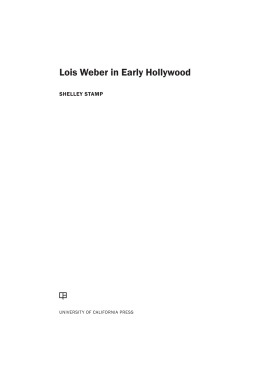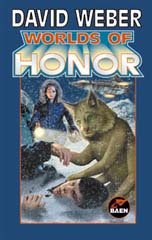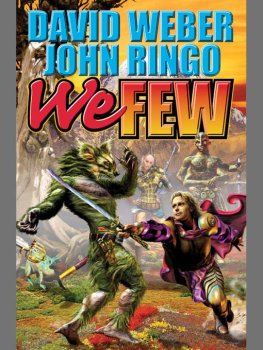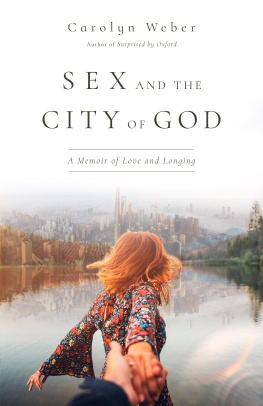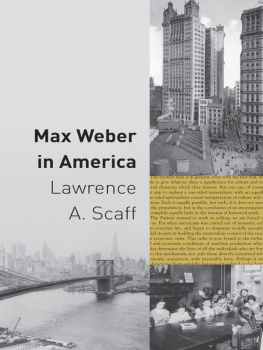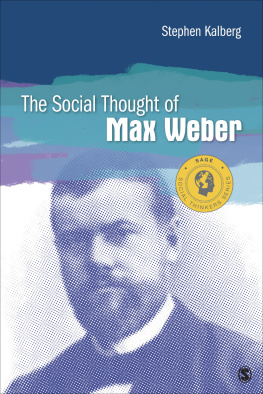with Martin F. Norden
Acknowledgments
Cari Beauchamp once said that those of us studying women film pioneers nurture attachments to dead girlfriends. Lois Weber has certainly served that role in my life these past many years. But I have also been thankful countless times for a network of living friends and colleagues who helped so much, in so many different ways, during the long process of writing this book.
Little could have been achieved without funding, and I am grateful for generous support from the National Endowment for the Humanities, the Academy of Motion Picture Arts and Sciences, and the University of California Presidents Research Fellowship in the Humanities. The University of California, Santa Cruz, also provided funding through the Arts Research Institute, the Committee on Research, and the Arts Deans Excellence Fund.
Many archivists and librarians aided my quest to find extant prints of Webers films and other materials related to her career. Pride of place must go to Madeline Matz, now retired from the Library of Congress, Motion Picture, Broadcasting and Recorded Sound Division. Madelines knowledge and passion for early women filmmakers has fueled many projects over the years, and I was very fortunate to benefit from her guidance early on. Thanks also to Madelines colleagues Rosemary Hanes, Christel Schmidt, Kim Tomadjoglou, and George Willeman. Close behind Madeline is Barbara Hall, former Head of Special Collections at the Margaret Herrick Library at the Academy of Motion Picture Arts and Sciences. Barb is a researchers dream: unfailingly generous, widely knowledgeable, and eager to publicize the rich resources of her collections. She and Val Almendarez shared their encyclopedic knowledge of other LA-area resources as well. Barbs predecessor at the Herrick, Scott Curtis, helped introduce me to the librarys Weber materials. Also extremely helpful were Jan-Christopher Horak, Mark Quigley, and Jim Friedman at the UCLA Film and Television Archive; Elif Rongen-Kaynaki at EYE, the Nederlands Filmmuseum; Bryony Dixon and Nina Harding at the British Film Institute; Fumiko Tsuneishi at the National Film Center in Tokyo; Virginia Callanan at the New Zealand Film Archive; and Annette Melville at the National Film Preservation Foundation in the U.S. Mariann Lewinsky Struli, my comrade-in-arms for the Weber retrospective at Il Cinema Ritrovato, deserves tremendous credit for her help unearthing extant prints in European archives. Staff at the New York Public Library for the Performing Arts, and in the Rare Books and Manuscripts Division of the New York Public Library, were also very helpful, as were librarians at the Los Angeles Public Library, the state censorship archives in Pennsylvania, and Ned Comstock at USCs Cinematic Arts Library. John Canning of the Allegheny City Society helped fill in the picture of Webers early years there.
Among the many generous colleagues who read or discussed this research with me, I am particularly grateful to Mark Lynn Anderson, Mark Garrett Cooper, Charlie Keil, Judith Mayne, Anne Morey, Gaylyn Studlar, and Jane Gaines, cheerleader-in-chief. Many others provided feedback and encouragement along the way: Ally Acker, Kay Armatage, Constance Balides, Jennifer Bean, Cari Beauchamp, Caetlin Benson-Allott, Martin Berger, Vicki Callahan, Liz Clarke, Monica DallAsta, Leslie Midkiff DeBauche, Mary Desjardins, Victoria Duckett, Annette Frster, Christine Gledhill, Hilary Hallett, Amelie Hastie, Maggie Hennefeld, Laura Horak, Jennifer Horne, Antonia Lant, Michele Leigh, Denise McKenna, April Miller, Christie Milliken, Charles Musser, Diane Negra, Jennifer Lynn Peterson, Lauren Rabinovitz, Laura Isabel Serna, Amy Shore, Art Simon, Dan Streible, Drake Stutesman, Yvonne Tasker, Kristen Anderson Wagner, Haidee Wasson, Kerrie Welsh, Mark Williams, Tami Williams, Kristen Whissel, and Paul Young. I am especially indebted to Eric Smoodin for his early faith in the project.
One of the unforeseen benefits of working on this project so long is that many people came to know I was interested in Weber and sent me items they came across in their own research or helped me get access to far-flung materials. Thanks especially to Richard Abel, Diana Anselmo-Sequeira, Rob Byrne, Scott Curtis, William M. Drew, Kathryn Fuller-Seeley, Lee Grieveson, Mark Johnson, Hiroshi Komatsu, Richard Koszarski, Luci Marzola, Sawako Ogawa, Jessica Rosner, Eric Schaefer, Scott Simmon, Pamela Skewes-Cox, Marilyn Slater, Hank Soboleski, Greg Waller, Marc Wannamaker, and especially Martin F. Norden, who was unstintingly generous in sharing his many Weber-related finds. Peter Gantz, Webers step-son, and Rick Snaman, her second cousin, were both exceptionally generous in sharing invaluable information about her family tree.
Help from research assistants made this massive undertaking much more manageable. Sirida Srisombati provided extraordinarily proficient and enthusiastic research in both Santa Cruz and Los Angeles at the outset of the project. Logan Walker stepped in later on with his characteristic quiet efficiency, organizing and digitizing my research collection with great skill and care. Dave Gurney proved an able ally in Chicago, and Eric Hoyt was my enterprising surrogate in LA.
Scholarly gatherings helped launch and sustain this work, particularly the 1999 conference Gender and Silent Cinema, coordinated by Eva Warth and Annette Frster in Utrecht; the conference Women and the Silent Screen, which Amelie Hastie and I organized at UC-Santa Cruz in 2001; and subsequent meetings in Montral, Guadalajara, Stockholm, Bologna, and Melbourne, as well as the Doing Womens Film and Television History conferences in England. Colleagues at these groundbreaking events provided indispensable sounding boards, methodological models, research tips, and inspiration.

